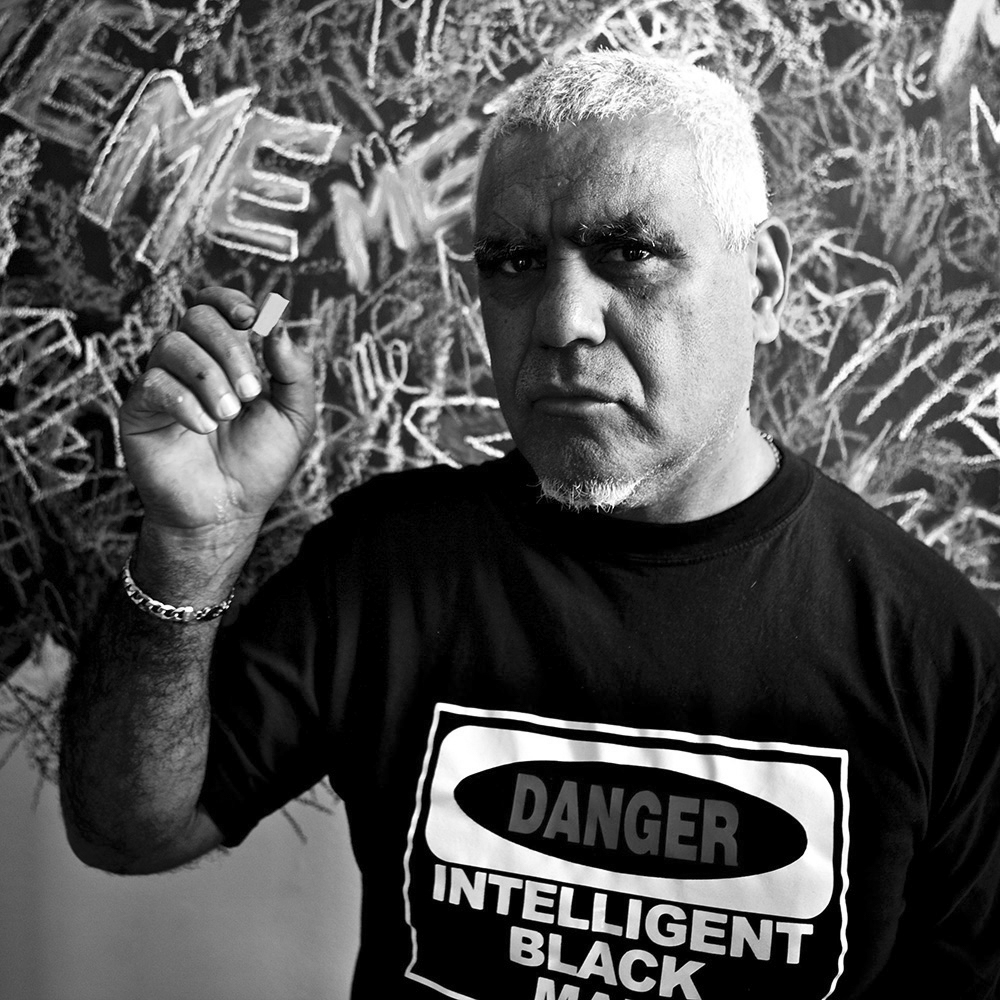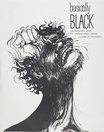Richard Bell
Brisbane
2017
Displayed 2017 at Carriageworks

Richard Bell
Born 1953, Charleville, Queensland. Lives and works Brisbane
Kamilaroi/Kooma, Northern Riverine region, Jiman/Gurang Gurang, North-East region
Richard Bell works across a variety of media including painting, installation, performance, video and text to challenge and provoke reflection upon preconceived ideas of Aboriginal art, including the complex artistic and political problems of western, colonial and Indigenous art production. He grew out of a generation of Aboriginal activists and has remained committed to the politics of Aboriginal emancipation and self-determination. At times employing humour, his work addresses continuing injustices against Aboriginal people and contemporary debates surrounding identity, place and politics.
Artist text
by Gary Foley
Making it Big (2017) is a collaboration between Richard Bell, me and Carriageworks. The work is a continuation and extension of Richard Bell’s recent travelling installation Tent Embassy (2016), which he saw as a tribute to the ‘genius’ of the young Aboriginal activists who established the 1972 ‘Aboriginal Embassy’ on the lawns of Parliament House in Canberra. The famous 1972 ‘Aboriginal Embassy’ remains the most successful Aboriginal political protest of the 20th century and was a political project that emerged as part of the Australian Black Power political movement of the late 1960s and early 70s.
For his new project, Making it Big, Bell intends to pay tribute to another highly successful project of the Black Power Movement and re-create the original stage version of the legendary theatre production Basically Black, which was first performed at the old Nimrod Street Theatre at Kings Cross in late 1972 by the National Black Theatre, which emerged out of urban Aboriginal community of Redfern.
The National Black Theatre had been established by Bob Maza in 1972 after he had returned from a 1970 visit to the US where he had attended a Black Power Conference in Atlanta, Georgia, and then visited the National Black Theatre of Harlem in New York City. That visit inspired Maza to create a similar ‘cultural wing’ of the black political renaissance back in Australia. Maza then established the National Black Theatre in a building in Regent Street, Redfern, in the heart of the then dynamic Black Power Movement that had set up a range of self-help organisations in Redfern including the first shopfront, free legal aid and medical services along with free breakfast-for-children programs and a housing cooperative.
It was in that context that the idea for a stage production in the form of a politically powerful satirical review was born. Bob Maza had earlier been part of a smaller theatre company in Melbourne along with Jack Charles and they had staged a series of performances of a show called Jack Charles Is Up and Fighting. Some of the sketches from that show would later form part of the new show that Maza was developing in Redfern, which would be called Basically Black.
Maza recruited a cast of great Aboriginal actors, namely Bindi Williams, Zac Martin and Aileen Corpus, and eventually also ‘conned’ me into becoming one of the cast and later one of the co-writers of the final version of Basically Black. The show was eventually directed by the owner of the then newly established Nimrod Street Theatre, which had set up in a former stable in Kings Cross, and a poster for the production was created by famous Sydney artist Brett Whiteley.
The show opened in November 1972 and played for six weeks to packed houses, and in doing so was largely responsible for putting the Nimrod Street Theatre on a sound financial footing in its early days. Basically Black attracted mixed reviews from the critics who had never experienced an all-Aboriginal stage production, which was also a powerful and confronting satirical take on the state of race relations in Australia at that time.
For Making It Big, the new project that Bell now proposes is not just a simple re-creation of the original stage show of Basically Black. That would be far too simple and lacking in the dangerous innovation that people have come to expect from a Richard Bell project. The element of risk in the new project rests in his idea that the new ‘exhibition’ should be the process that will be involved in trying to resurrect and stage the re-creation of Basically Black. Through a series of workshops, film screening and public forums involving invited guest artists, performers, musicians, poets and writers, the project will involve revealing to the audience/patrons the process of how this re-creation of Basically Black will evolve.
It is clear that such an idea is dangerous in that any number of things may go wrong, but that has always been the nature of Bell’s artistic expression. At very least it will reveal to Carriageworks audiences the raw experience of dynamic black creative forces at work.
Making it Big is a work by Richard Bell with Gary Foley and Rachael Maza
